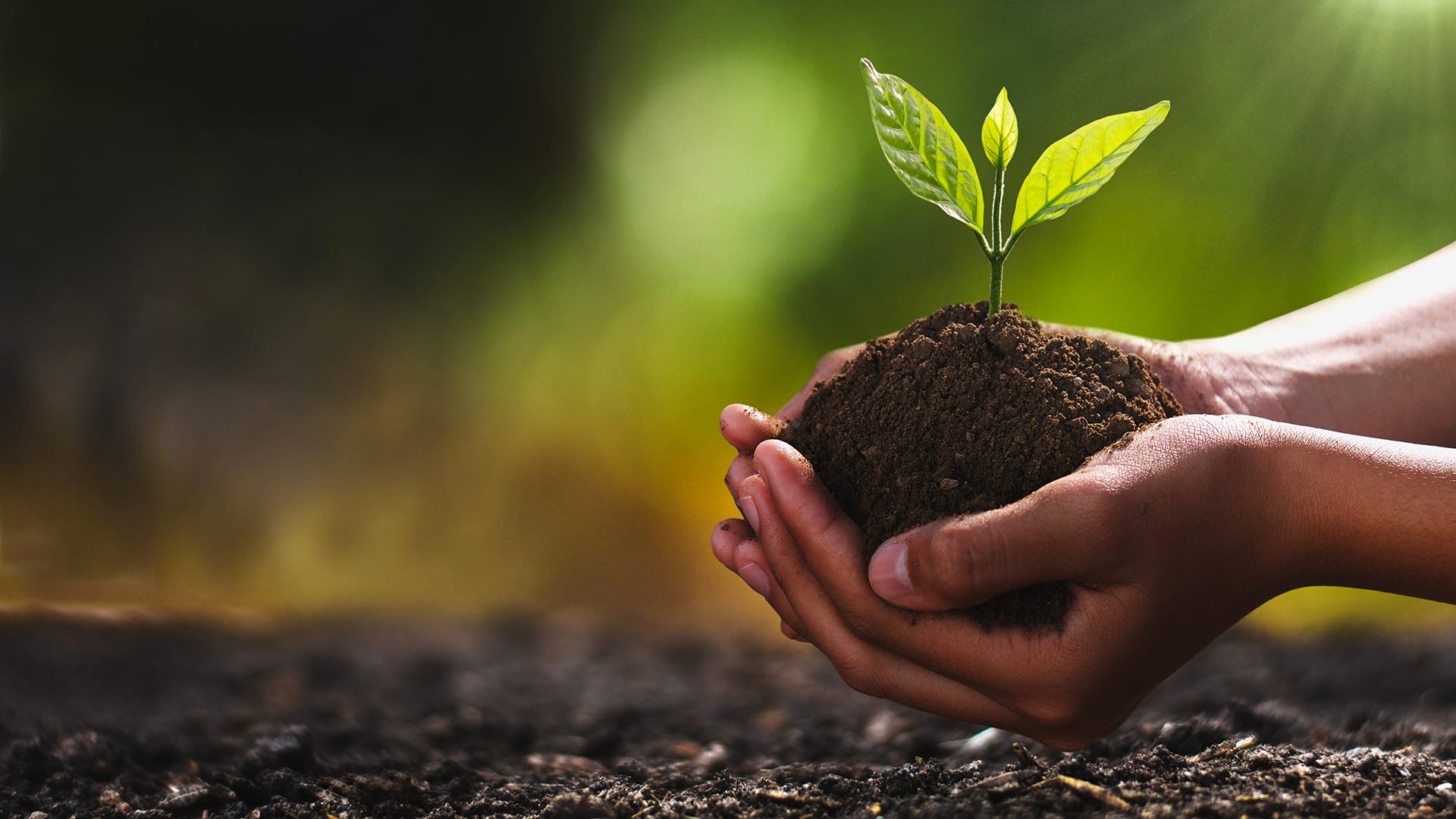Scroll for prep

Please wait…
This video is having trouble loading. You may have lost your Internet connection.
Step 1: Click to Reload this page
Step 2: Click to
Try our other video player
Step 3: Contact your teacher if trouble persists.
Or,
dismiss this message.
CONVERSEMOS:
¿Crees que las plantas necesitan tierra para poder crecer? ¿Cómo podrías averiguarlo?
Pista...
Piensa en cómo le hicimos para averiguar si las semillas necesitan agua para crecer.

Please wait…
This video is having trouble loading. You may have lost your Internet connection.
Step 1: Click to Reload this page
Step 2: Click to
Try our other video player
Step 3: Contact your teacher if trouble persists.
Or,
dismiss this message.
CONVERSEMOS:
¿Qué crees que va a suceder?
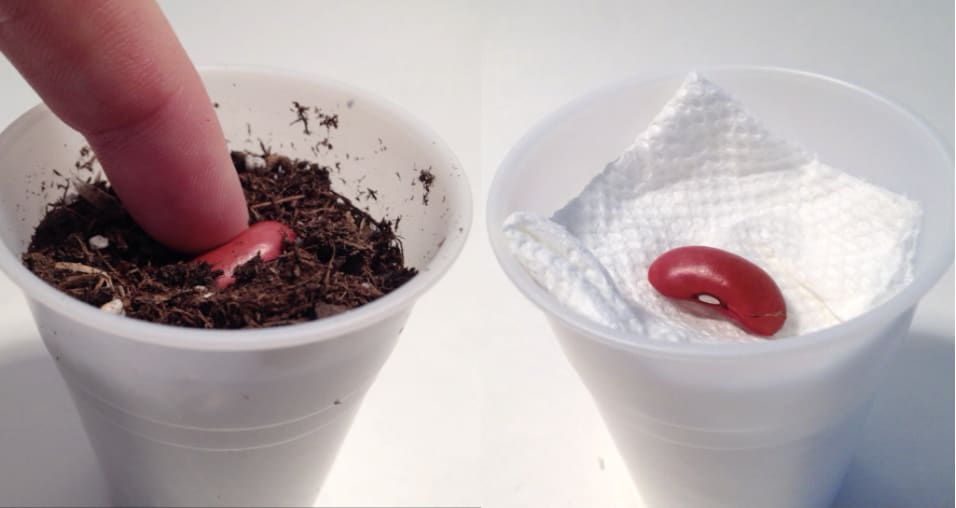

Please wait…
This video is having trouble loading. You may have lost your Internet connection.
Step 1: Click to Reload this page
Step 2: Click to
Try our other video player
Step 3: Contact your teacher if trouble persists.
Or,
dismiss this message.
Compara las dos plantas de tomate. La de la izquierda creció en la tierra. La de la derecha creció en agua y sin tierra.
Conversemos: ¿Qué planta se ve más saludable? ¿Por qué?
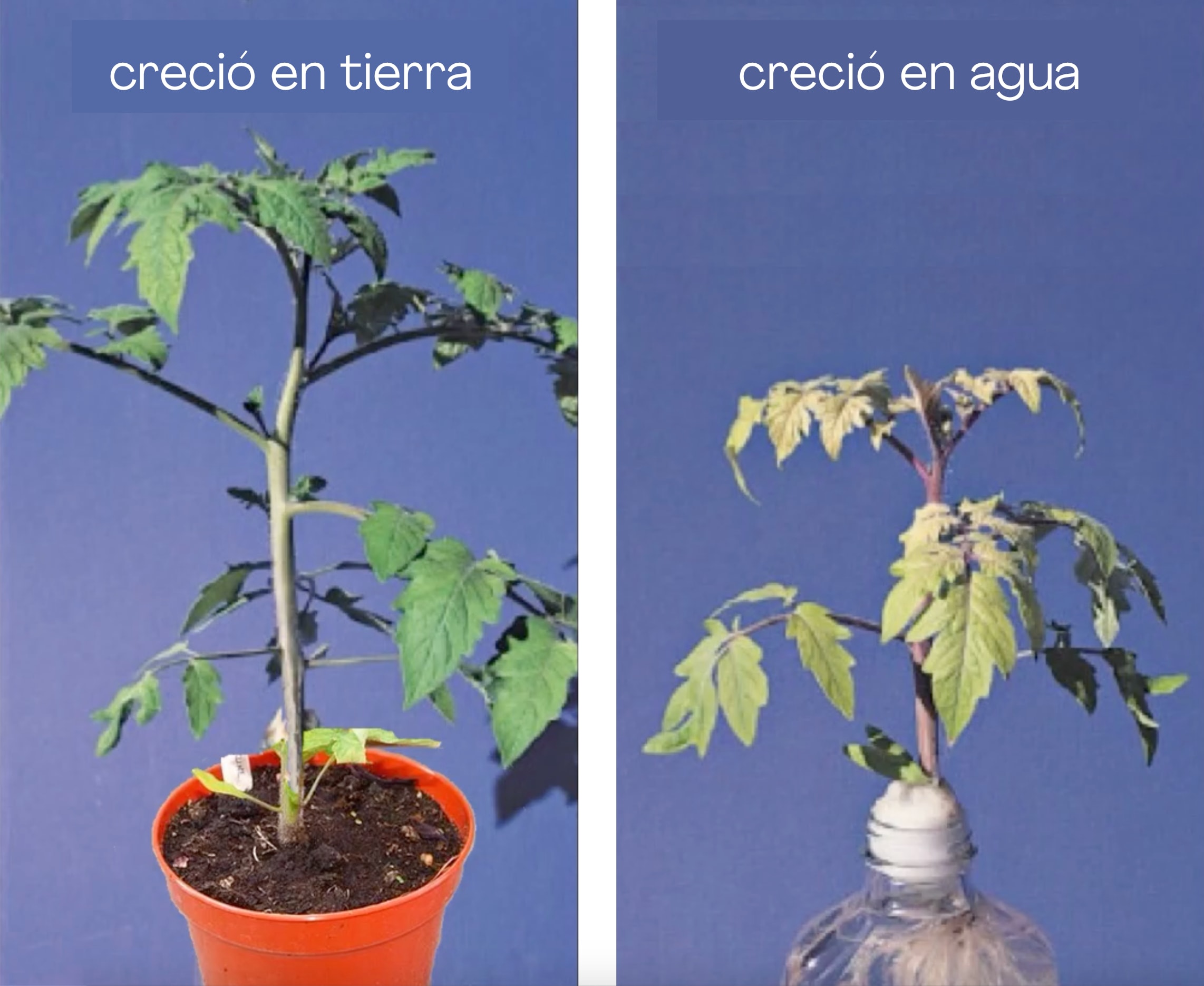

Please wait…
This video is having trouble loading. You may have lost your Internet connection.
Step 1: Click to Reload this page
Step 2: Click to
Try our other video player
Step 3: Contact your teacher if trouble persists.
Or,
dismiss this message.
CONVERSEMOS:
Nuestros experimentos mostraron que las plantas necesitan agua y tierra para crecer bien. ¿Qué otras cosas necesitan?

Please wait…
This video is having trouble loading. You may have lost your Internet connection.
Step 1: Click to Reload this page
Step 2: Click to
Try our other video player
Step 3: Contact your teacher if trouble persists.
Or,
dismiss this message.

Please wait…
This video is having trouble loading. You may have lost your Internet connection.
Step 1: Click to Reload this page
Step 2: Click to
Try our other video player
Step 3: Contact your teacher if trouble persists.
Or,
dismiss this message.
Paso
01/13
01/13
Conversemos:

Please wait…
This video is having trouble loading. You may have lost your Internet connection.
Step 1: Click to Reload this page
Step 2: Click to
Try our other video player
Step 3: Contact your teacher if trouble persists.
Or,
dismiss this message.
Paso
02/13
02/13
Esta es nuestra idea:

Please wait…
This video is having trouble loading. You may have lost your Internet connection.
Step 1: Click to Reload this page
Step 2: Click to
Try our other video player
Step 3: Contact your teacher if trouble persists.
Or,
dismiss this message.
Paso
03/13
03/13
Si estás en un grupo, encuentra un compañero o compañera
con quien trabajar. Si no estás en un grupo, puedes trabajar
sola o solo.
con quien trabajar. Si no estás en un grupo, puedes trabajar
sola o solo.

Please wait…
This video is having trouble loading. You may have lost your Internet connection.
Step 1: Click to Reload this page
Step 2: Click to
Try our other video player
Step 3: Contact your teacher if trouble persists.
Or,
dismiss this message.
Paso
04/13
04/13
Obtén tus materiales.

Please wait…
This video is having trouble loading. You may have lost your Internet connection.
Step 1: Click to Reload this page
Step 2: Click to
Try our other video player
Step 3: Contact your teacher if trouble persists.
Or,
dismiss this message.
Paso
05/13
05/13
Escribe tu nombre en la etiqueta.

Please wait…
This video is having trouble loading. You may have lost your Internet connection.
Step 1: Click to Reload this page
Step 2: Click to
Try our other video player
Step 3: Contact your teacher if trouble persists.
Or,
dismiss this message.
Paso
06/13
06/13
Uno de ustedes dos tiene que poner una X en su etiqueta.
Decidan quién lo hará.
Decidan quién lo hará.

Please wait…
This video is having trouble loading. You may have lost your Internet connection.
Step 1: Click to Reload this page
Step 2: Click to
Try our other video player
Step 3: Contact your teacher if trouble persists.
Or,
dismiss this message.
Paso
07/13
07/13
Coloquen sus etiquetas sobre los vasos desechables.

Please wait…
This video is having trouble loading. You may have lost your Internet connection.
Step 1: Click to Reload this page
Step 2: Click to
Try our other video player
Step 3: Contact your teacher if trouble persists.
Or,
dismiss this message.
Paso
08/13
08/13
Vacía las semillas de rábano en el plato desechable.
Cada persona necesitará cinco semillas.
Cada persona necesitará cinco semillas.

Please wait…
This video is having trouble loading. You may have lost your Internet connection.
Step 1: Click to Reload this page
Step 2: Click to
Try our other video player
Step 3: Contact your teacher if trouble persists.
Or,
dismiss this message.
Paso
09/13
09/13
Pon tus cinco semillas sobra la tierra en tu vaso desechable,
de esta manera. Luego, rocía la tierra y las semillas con agua.
de esta manera. Luego, rocía la tierra y las semillas con agua.

Please wait…
This video is having trouble loading. You may have lost your Internet connection.
Step 1: Click to Reload this page
Step 2: Click to
Try our other video player
Step 3: Contact your teacher if trouble persists.
Or,
dismiss this message.
Paso
10/13
10/13
Pon el vaso que NO está marcado con una X al lado de la
ventana, donde le de mucha luz.
ventana, donde le de mucha luz.

Please wait…
This video is having trouble loading. You may have lost your Internet connection.
Step 1: Click to Reload this page
Step 2: Click to
Try our other video player
Step 3: Contact your teacher if trouble persists.
Or,
dismiss this message.
Paso
11/13
11/13
Cubre el vaso que está marcado con la X con papel aluminio.

Please wait…
This video is having trouble loading. You may have lost your Internet connection.
Step 1: Click to Reload this page
Step 2: Click to
Try our other video player
Step 3: Contact your teacher if trouble persists.
Or,
dismiss this message.
Paso
12/13
12/13
Conversemos. ¿Con quién estás de acuerdo? ¿Por qué opinas eso?

Please wait…
This video is having trouble loading. You may have lost your Internet connection.
Step 1: Click to Reload this page
Step 2: Click to
Try our other video player
Step 3: Contact your teacher if trouble persists.
Or,
dismiss this message.
Paso
13/13
13/13
Rocíen sus semillas con agua todos los días hasta que broten.
Regresen las semillas marcadas con una X a la oscuridad
después de rociarlas.
Regresen las semillas marcadas con una X a la oscuridad
después de rociarlas.


Please wait…
This video is having trouble loading. You may have lost your Internet connection.
Step 1: Click to Reload this page
Step 2: Click to
Try our other video player
Step 3: Contact your teacher if trouble persists.
Or,
dismiss this message.

Please wait…
This video is having trouble loading. You may have lost your Internet connection.
Step 1: Click to Reload this page
Step 2: Click to
Try our other video player
Step 3: Contact your teacher if trouble persists.
Or,
dismiss this message.
Paso
01/03
01/03
Obtén una hoja que dice "Dibuja los rábanos", un lápiz y
algunos crayones o plumones.
algunos crayones o plumones.

Please wait…
This video is having trouble loading. You may have lost your Internet connection.
Step 1: Click to Reload this page
Step 2: Click to
Try our other video player
Step 3: Contact your teacher if trouble persists.
Or,
dismiss this message.
Paso
02/03
02/03
Con tu compañero o compañera, ve por el vaso que estaba
en la oscuridad y el vaso que estaba en la luz.
en la oscuridad y el vaso que estaba en la luz.

Please wait…
This video is having trouble loading. You may have lost your Internet connection.
Step 1: Click to Reload this page
Step 2: Click to
Try our other video player
Step 3: Contact your teacher if trouble persists.
Or,
dismiss this message.
Paso
03/03
03/03
Observa los dos vasos. En tu hoja de trabajo, dibuja y colorea
lo que ves en cada vaso.
lo que ves en cada vaso.

Please wait…
This video is having trouble loading. You may have lost your Internet connection.
Step 1: Click to Reload this page
Step 2: Click to
Try our other video player
Step 3: Contact your teacher if trouble persists.
Or,
dismiss this message.
Conversemos:
¿Qué planta se te hace que se ve más saludable: la que creció en la luz o la que creció en la oscuridad?
¿Por qué opinas eso?
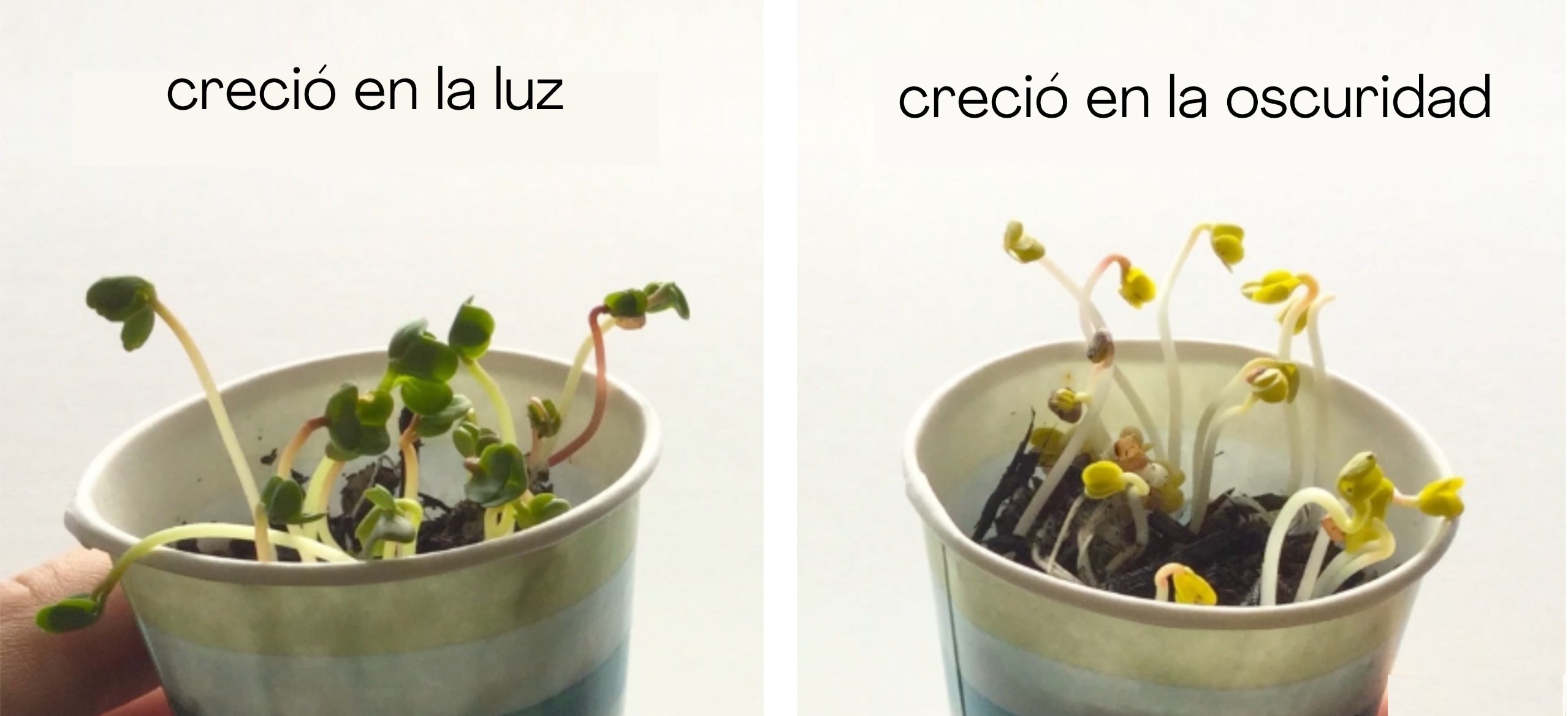

Please wait…
This video is having trouble loading. You may have lost your Internet connection.
Step 1: Click to Reload this page
Step 2: Click to
Try our other video player
Step 3: Contact your teacher if trouble persists.
Or,
dismiss this message.

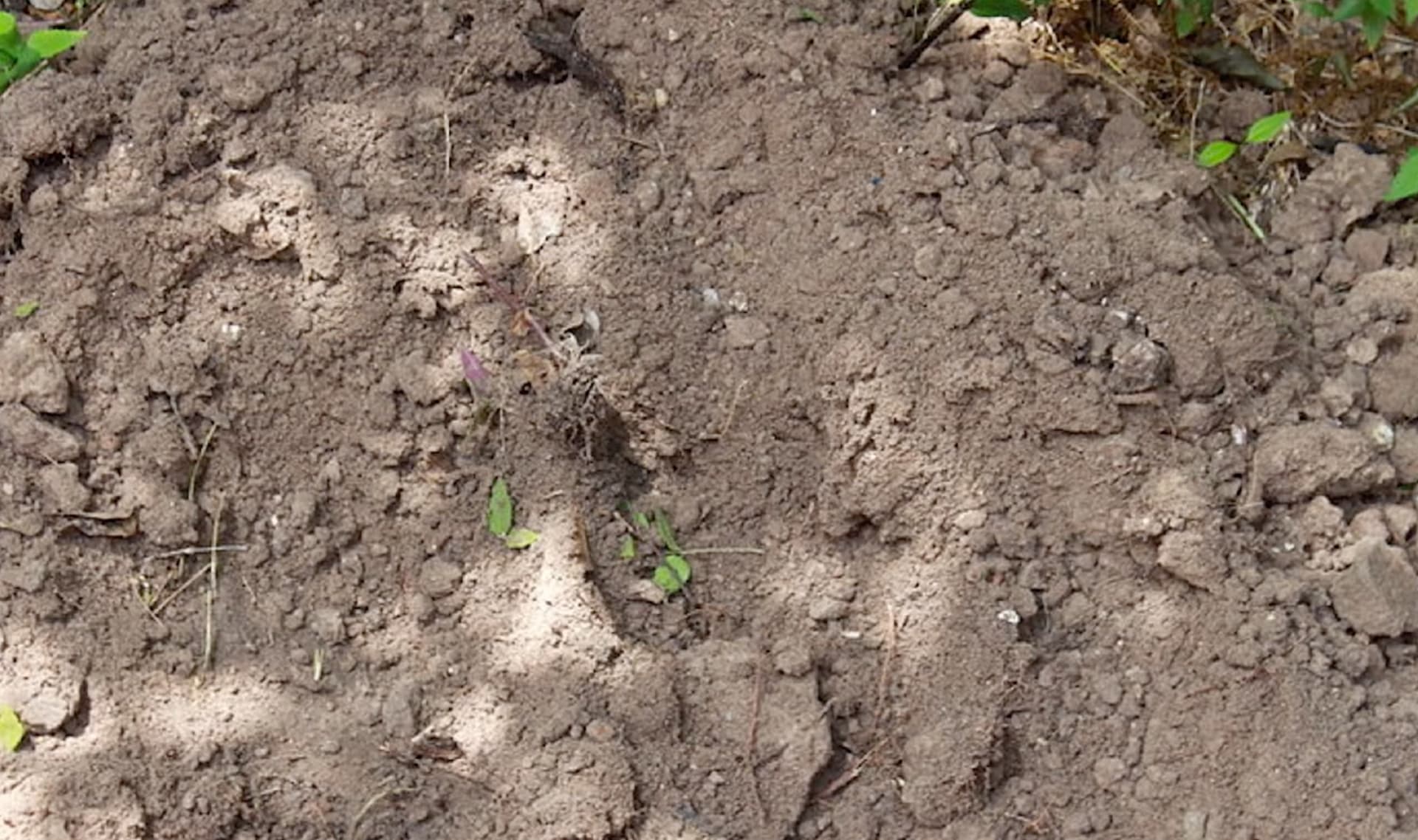
suelo
1 de 8
pedacitos de piedras y de otros materiales que cubren la superficie de la Tierra
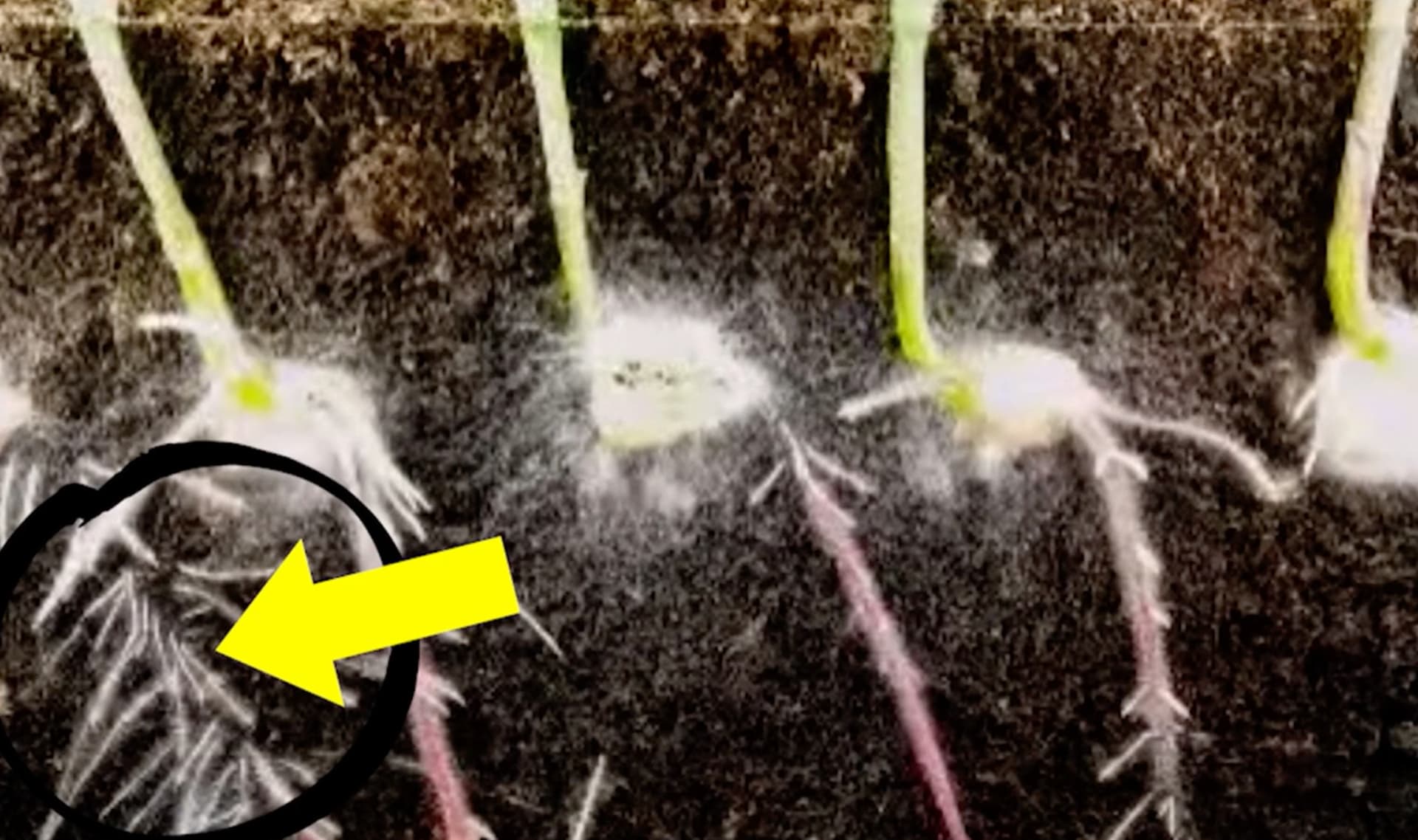
raíz
2 de 8
la parte de una planta que usualmente se encuentra bajo tierra
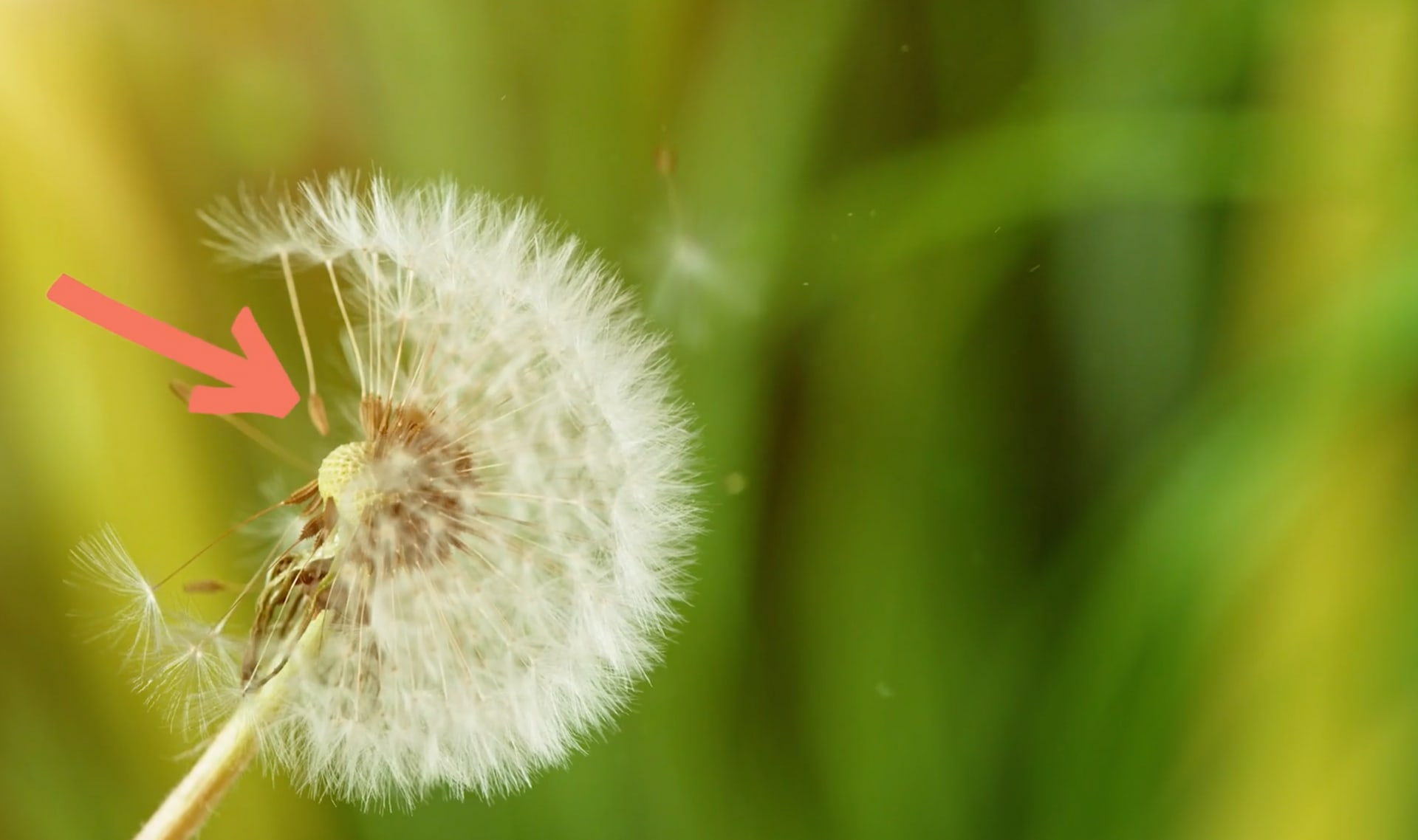
semilla
3 de 8
la parte de una planta que puede crecer y convertirse en una plantita
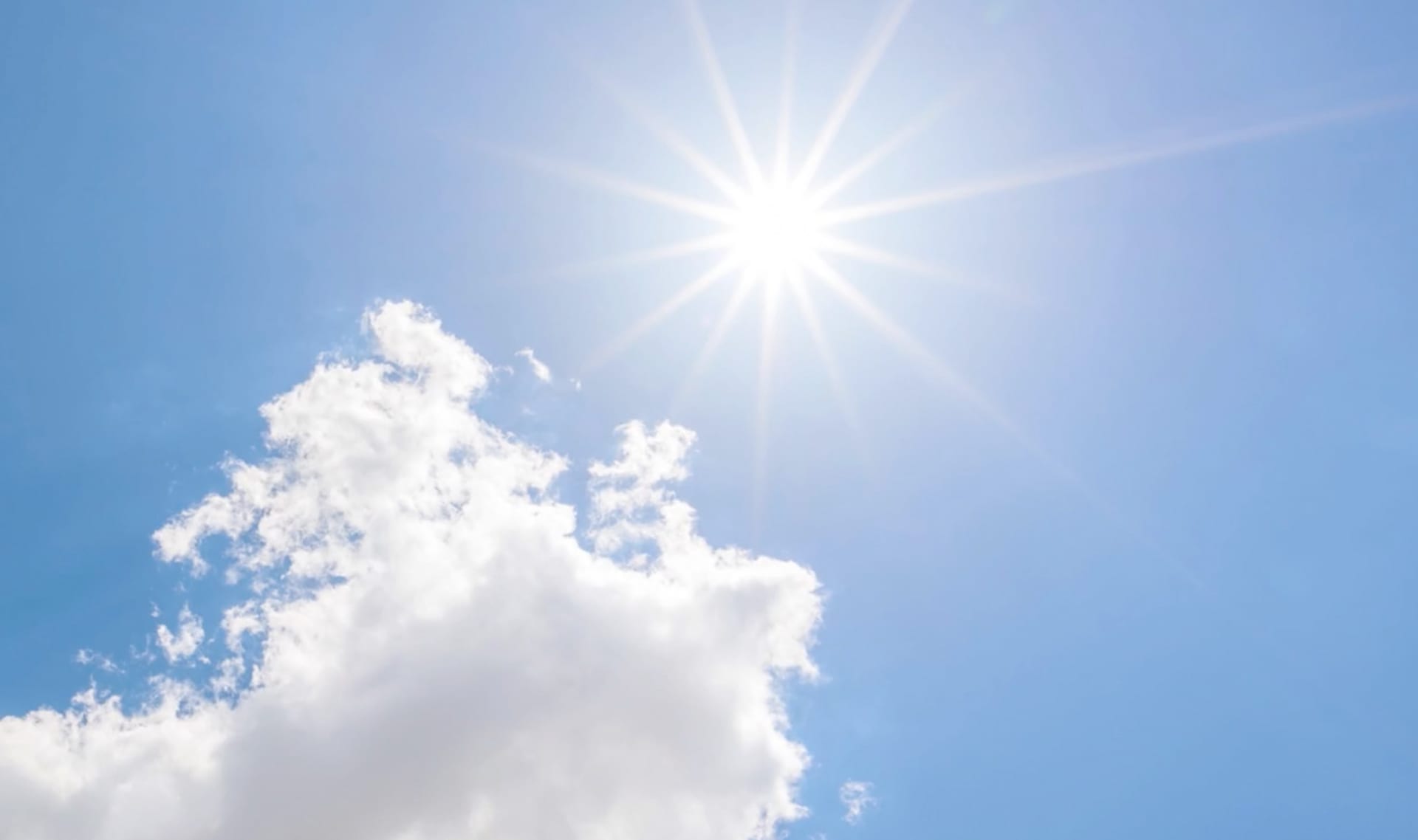
luz solar
4 de 8
luz que proviene del Sol
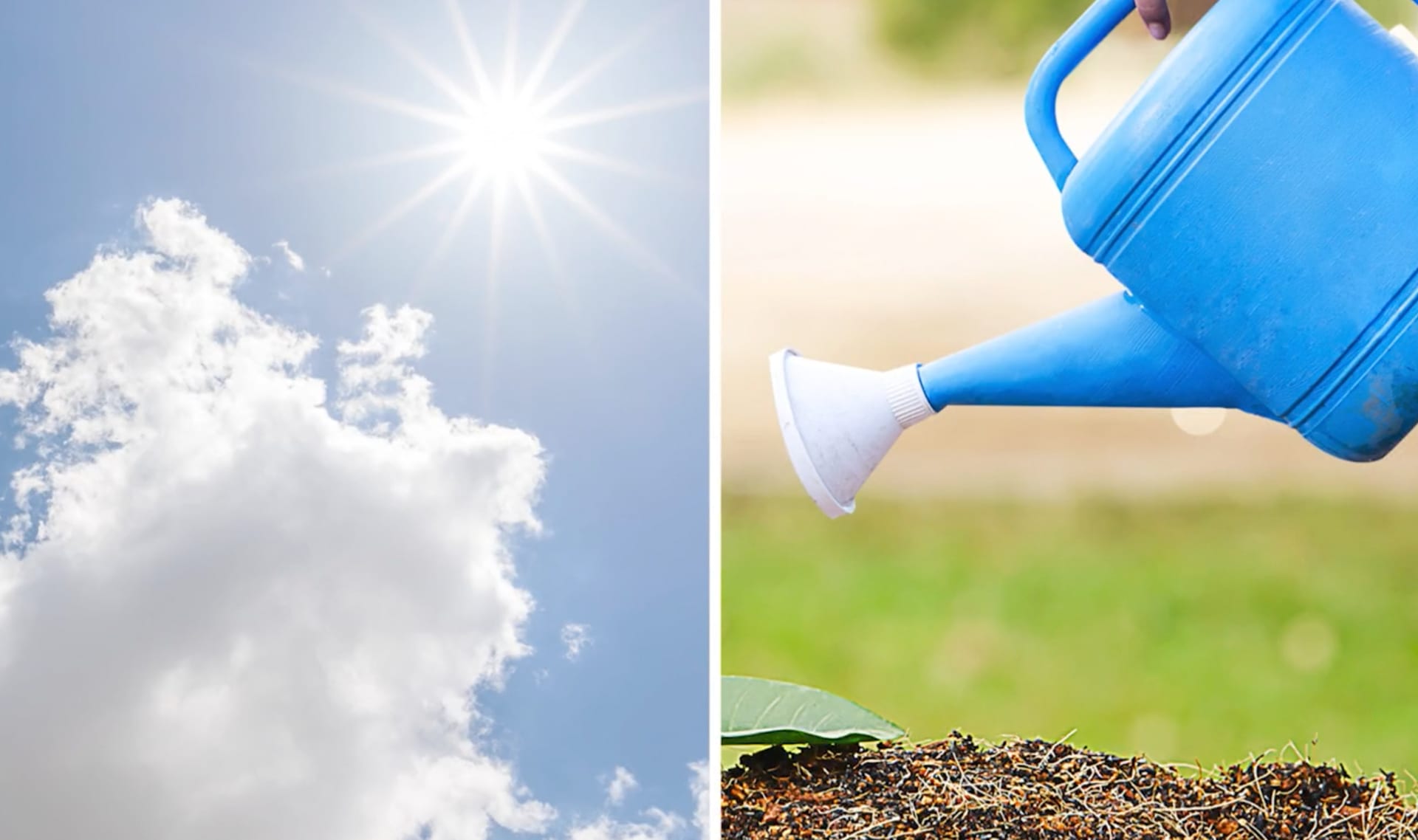
necesidades
5 de 8
algo que un animal o una planta necesita para poder vivir
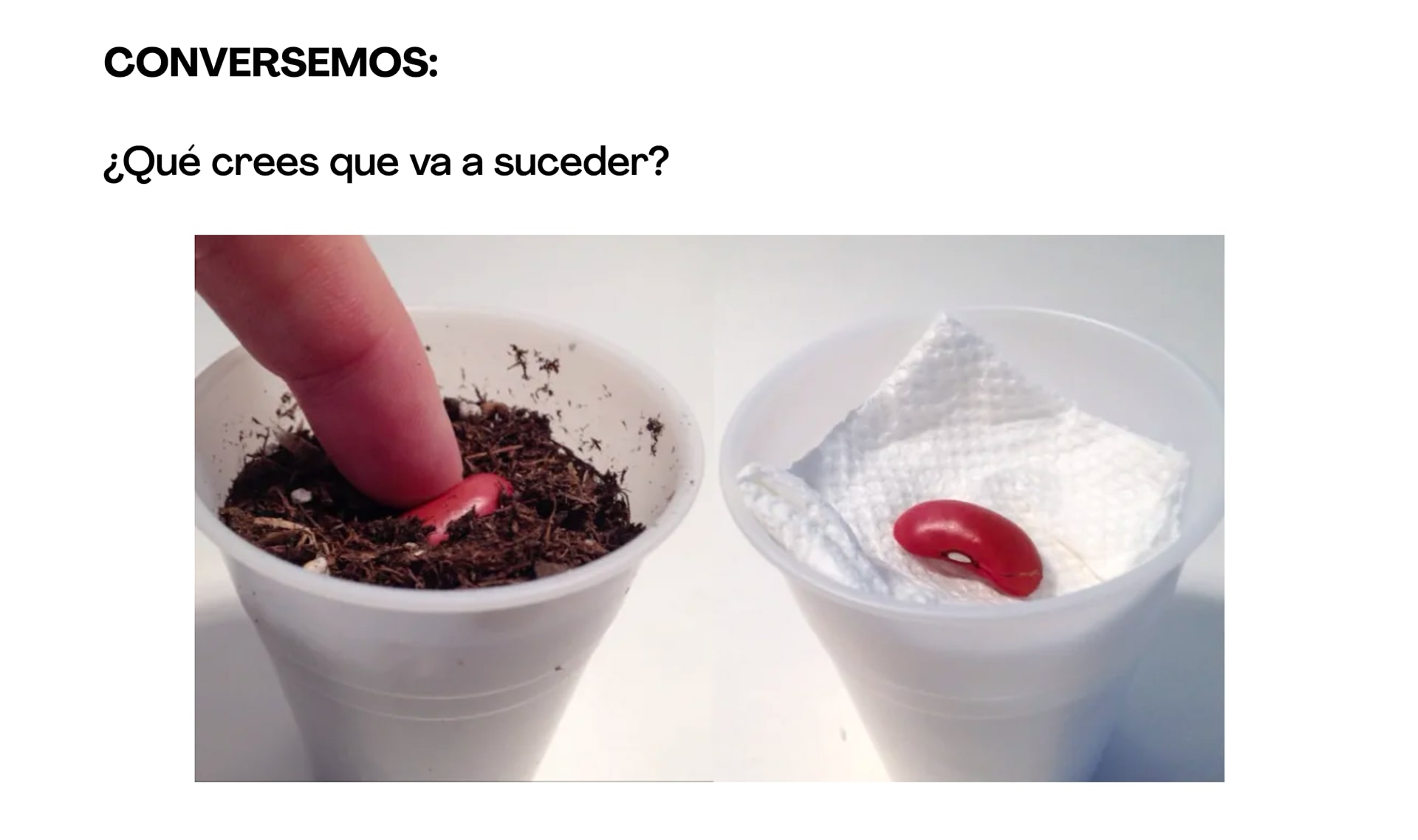
predecir
6 de 8
suponer lo que va a suceder basándote en cosas que ya sabes

Please wait…
This video is having trouble loading. You may have lost your Internet connection.
Step 1: Click to Reload this page
Step 2: Click to
Try our other video player
Step 3: Contact your teacher if trouble persists.
Or,
dismiss this message.
investigar
7 de 8
averiguar la respuesta a una pregunta o para entender cómo funciona algo
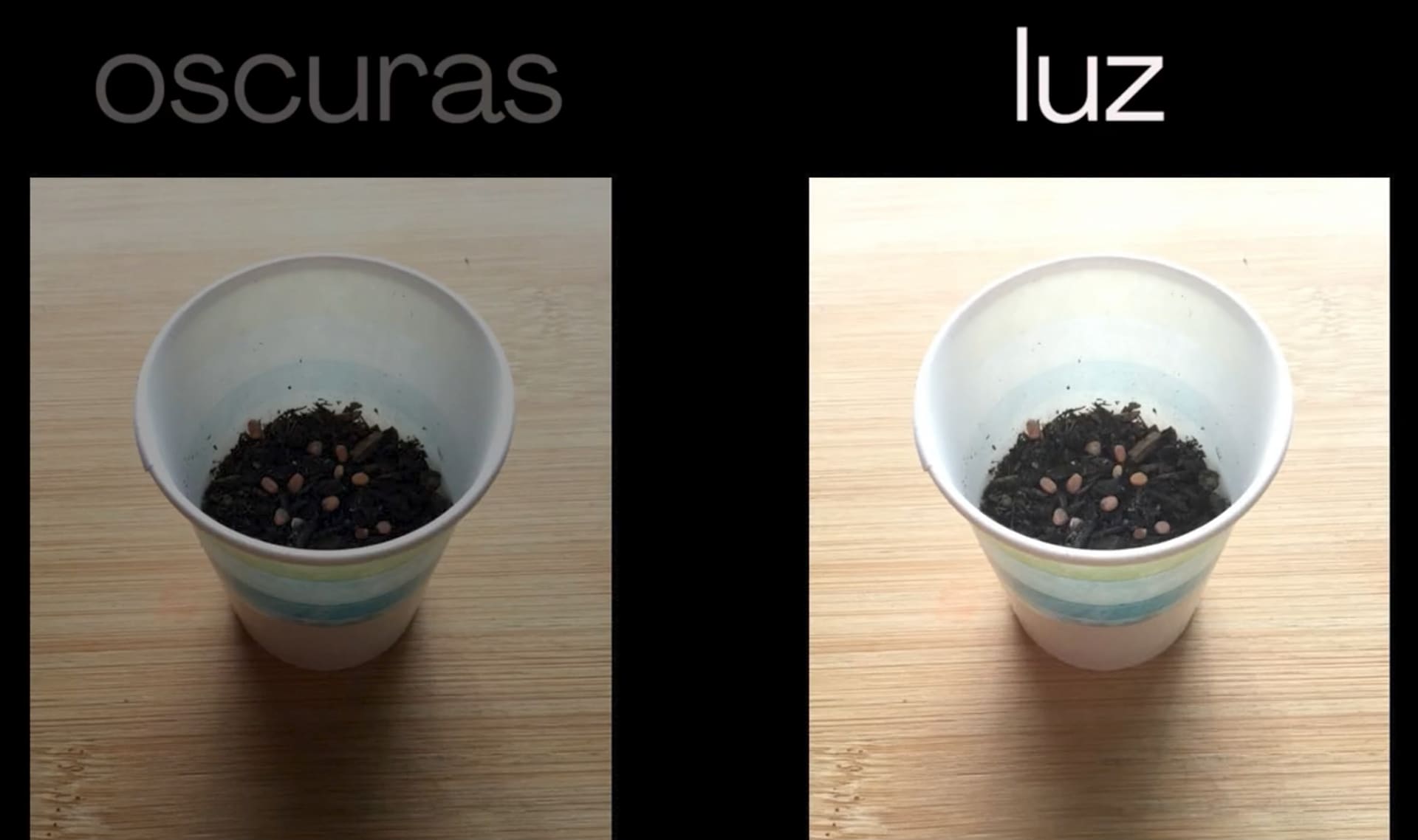
experimento
8 de 8
una prueba que se usa para descubrir más información sobre una pregunta
